Telling time in Spanish is one of those topics that feels simple at first glance, but when you dive in, it’s packed with opportunities for discovery and learning. Teaching Spanish time is more than just a lesson on numbers—it’s a practical life skill that equips students for real-world conversations in Spanish-speaking countries. Whether your students are learning to read a time clock, write out Spanish time expressions, or tell time for their daily routines, this topic is a cornerstone of language fluency.
For educators working with young beginner learners of Spanish – middle school, or even high school students – the challenge for Spanish teachers is to create engaging and effective lessons. This blog post will show you how to incorporate great resources, including sets of super simple worksheets, interactive activities, and teaching tools using the Spanish Time Vocabulary Bundle. These activities & Spanish worksheets make it easy to hold the attention of your Spanish class and support students’ learning of this foundational topic. Read on to find out how to make teaching la hora fun, engaging, and stress-free!
Why Teaching Spanish Time Matters for Language Learners
Telling time is a life skill that’s useful in any language. Learning to understand and express clock time in Spanish helps students navigate real-life situations like:
- Discussing daily activities: “A las ocho de la mañana tengo clase de ciencias” (At 8 a.m., I have science class).
- Planning social events: “¿A qué hora nos encontramos?” (At what time are we meeting?).
For English speakers, understanding Spanish time expressions introduces a new language structure. Sometimes Spanish includes slightly different expressions that your students might not use in English:
- The quarter hour: “Son las tres y cuarto” (It’s 3:15).
- The half hour: “Son las dos y media” (It’s 2:30).
- The 24-hour clock, or military time, commonly used in Spanish-speaking countries.
This provides a window into the different ways Spanish expresses the number of minutes and the time of day.
Tools to Teach Spanish Time: Why the Spanish Time Vocabulary Bundle Works
The Spanish Time Vocabulary Bundle is a comprehensive resource for teachers of middle school or high schoolers. It includes:
- A PowerPoint for introducing the key expressions for telling time in Spanish with visuals to increase comprehension and examples.
- Spanish telling time worksheets: These Spanish worksheets focus on writing practice, matching digital time to written phrases, and drawing clock hands for the correct time.
- Practice sheets with answer keys: Perfect for both whole class lessons and independent work.
- Visual images: These make it easy to connect abstract concepts like y media to real-world applications.
- Printable worksheets: These worksheets get your students thinking about time zones for real life connections! A flexible option for classrooms and homework.
- Speaking task cards – Students each get a task card and then this activities requires them to pair up with a different partner each time for fun, engaging practice. And the answers are included to make this stress free for the teacher because they can help their partner if they get stuck!
- 2 games on Spanish time vocabulary
- Running dictation activity – This fun competitive game will get your Spanish students up and moving while working collaboratively with their team.
- Spanish short story using time vocabulary with pre and post-reading activities AND audio file
This bundle has everything you need to teach time in context and has two weeks of materials!
How to Structure Your Lesson Plans for Spanish Time
Here’s a step-by-step guide to make your lessons effective and engaging for class members of all levels:
1. Introduce Target Vocabulary
Start with the basics using the introduction Powerpoint:
- Teach numbers and phrases like “¿Qué hora es?” (What time is it?) and “Son las dos.” (It’s 2 o’clock).
- Introduce the Spanish word for common terms, such as “la mañana” (morning) and “la tarde” (afternoon).
- The difference between digital clocks and analog.
- Using y cuarto, y media, and menos to describe the quarter hour, half hour, and times like “Son las ocho menos diez” (It’s 7:50).
Use a visual image, included in the PowerPoint, to help beginners associate terms with the correct time.
2. Use Whole Class Lessons to Build Foundations for telling time in Spanish
After guiding students through the standard rules of telling time in Spanish, play some whole class games:
- Running dictations class game
- Matamoscas– Who can correctly pick the right word first? This is a quick partner race game.
- Card Matching Game – Practice key time vocabulary with this partner game
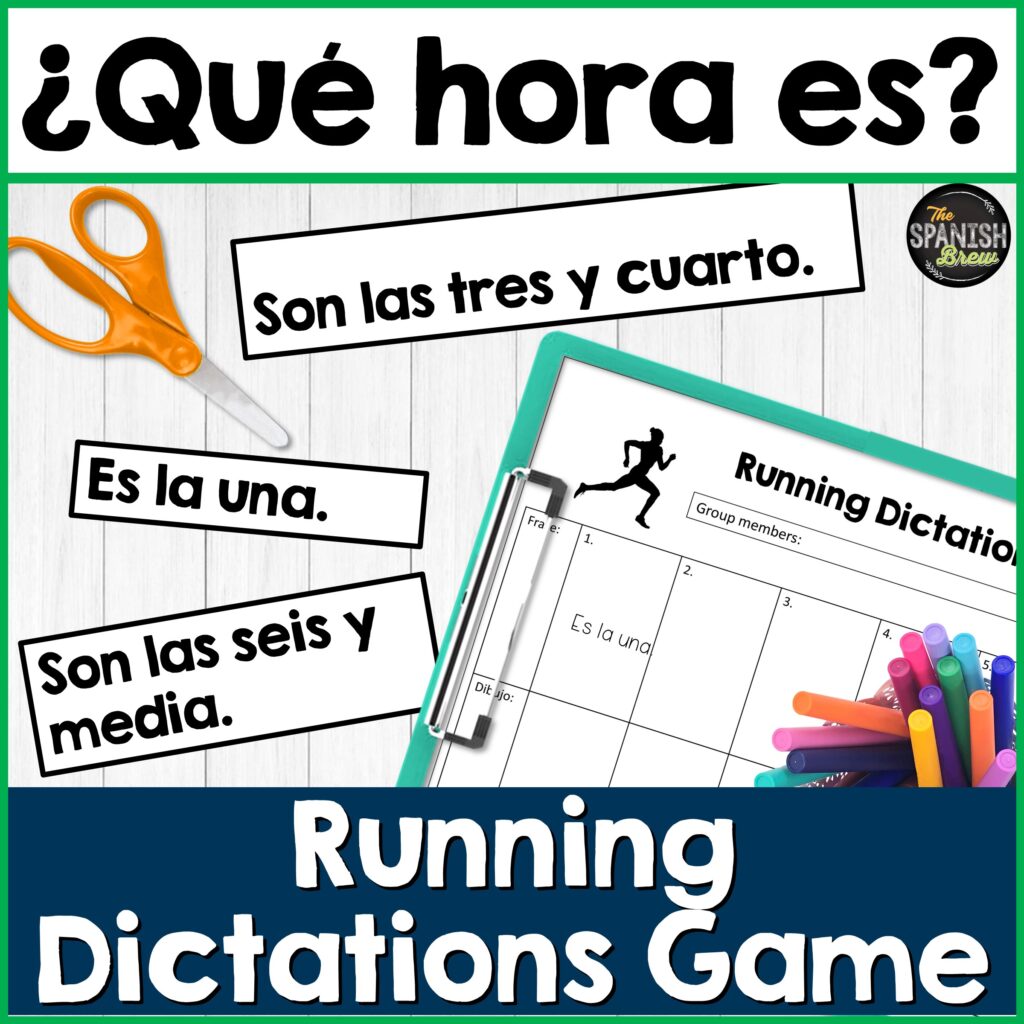
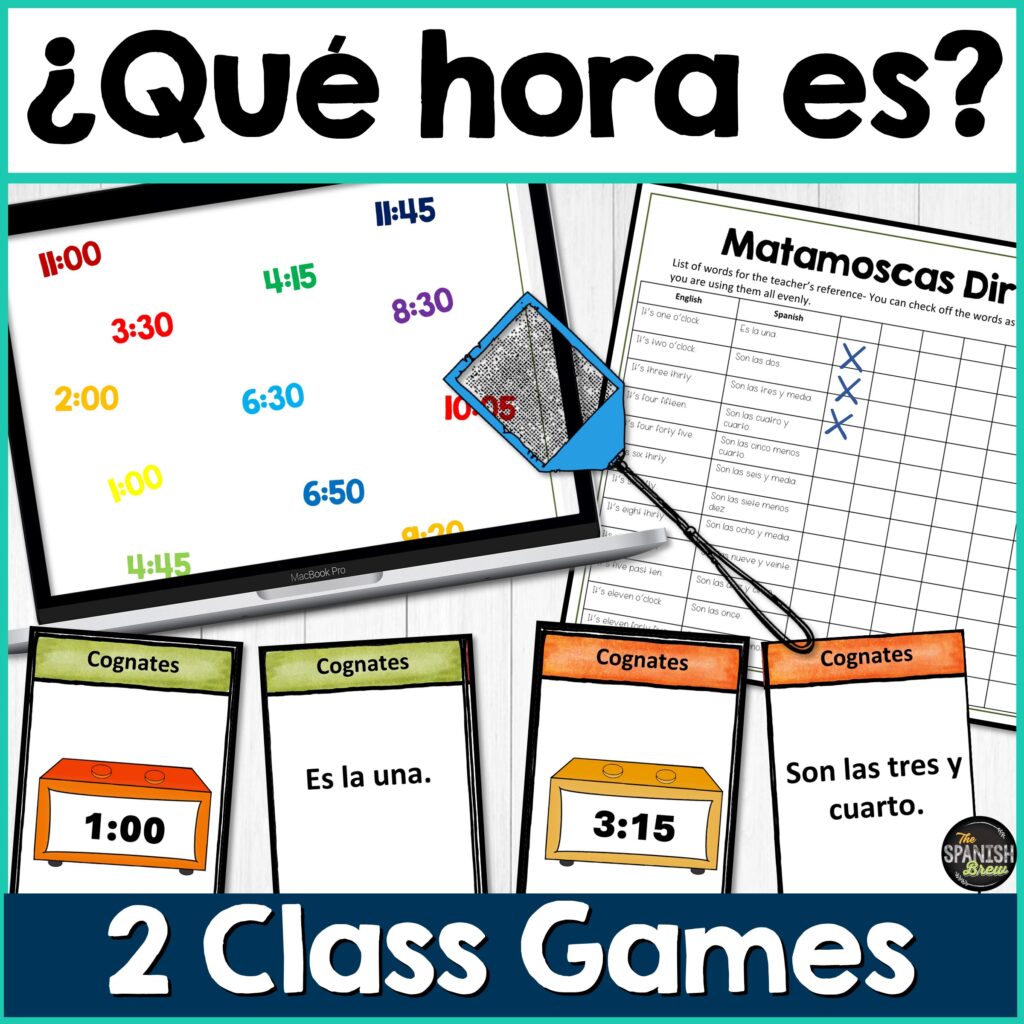
3. Incorporate Small Groups and Independent Work
Break the class into small groups for collaborative activities. Students can:
- Use question cards to quiz each other on clock time and daily routines.
- Complete Spanish telling time worksheets as a team, focusing on time zones in Spanish-speaking countries around the world.
For individual students, assign a writing exercise where they describe their daily activities using time expressions. For example:
- “Tengo la clase de español a las ocho de la mañana.” (I wake up at 6 a.m.).
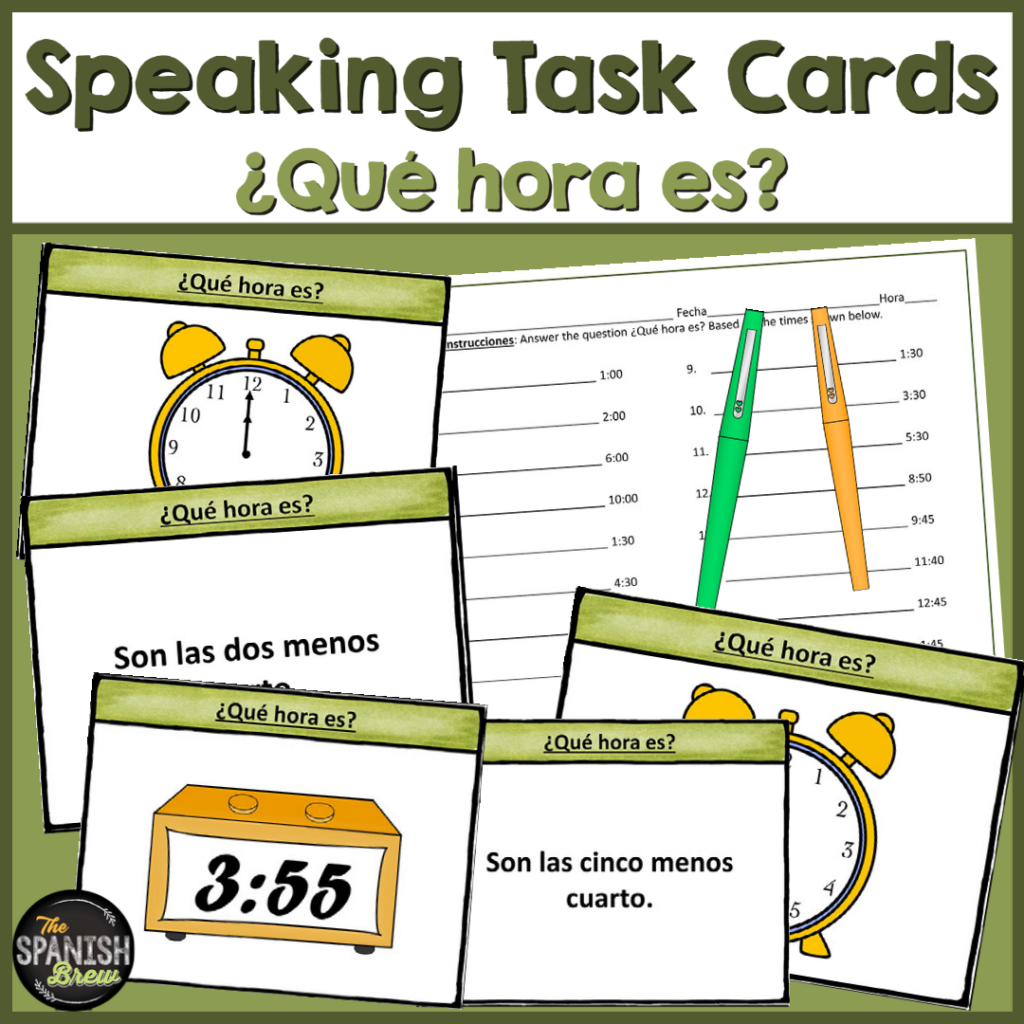
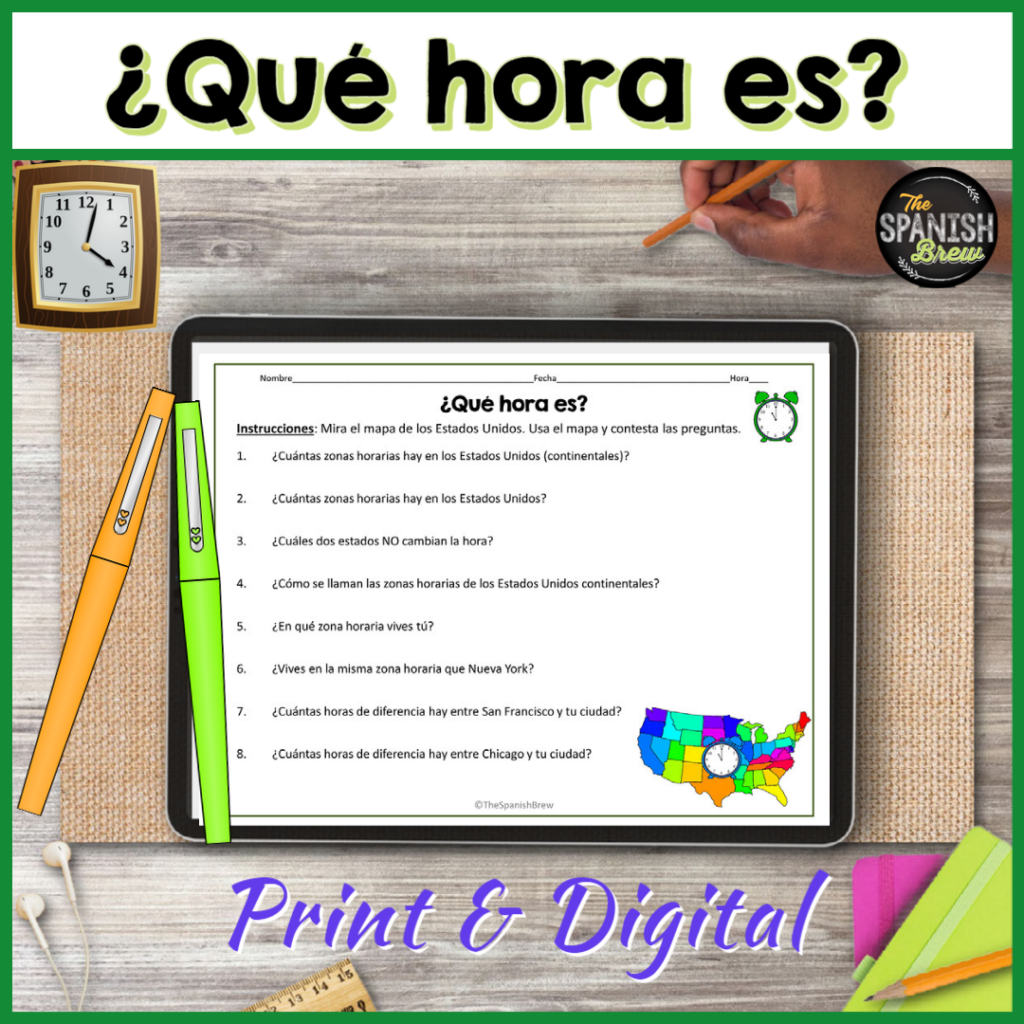
4. Use Interactive Writing Practice Bell Ringers
For a quick start or finish to class, Incorporate fun writing exercises that mix Spanish words with English words for comparison. For example:
- Translate phrases like “8:15 a.m.” into “Son las ocho y cuarto de la mañana.”
Students can write their answers on a scrap piece of paper, race a partner, or submit their answers digitally. These activities are perfect for independent work or middle school students who benefit from extra reinforcement.
5. Connect the Lessons to Real-Life Scenarios
Help students understand the practical value of their learning:
- Create a mock school schedule for class members to read aloud.
- After using the time zones worksheets, plan a pretend trip to a Spanish-speaking country where students practice asking and answering questions about time.
These exercises show how daily routines and time of day play out in real conversations, keeping your students engaged.
6. Fun short story using time vocabulary
Spanish acquisition happens when students see and hear the language in context. And a short story is perfect for this especially because they can use the pictures to help them decode Spanish. Plus there is an audio file included not only so students can hear the Spanish but it also saves your voice.
Why the Spanish Time Vocabulary Bundle Is a Great Resource for Teachers
This bundle is packed with features that make it ideal for teaching:
- Target vocabulary and phrases for young beginners, middle school, and high school students.
- A mix of whole class lessons, small groups, and independent work to suit all teaching styles.
- Flexible printable worksheets for classroom use or homework.
- Tools to help students understand how to tell time in Spanish, while reinforcing standard rules for telling time in Spanish.
Supporting Your Spanish Class with the Right Resources
The key to teaching Spanish time expressions is variety. By combining writing practice, visual images, and real-world applications, you can hold the attention of your Spanish class and help them master this essential life skill. The Spanish Time Vocabulary Bundle offers everything you need to make these lessons both fun and effective for your Spanish students.
Whether you’re working with middle school students or high schoolers, these Spanish resources are designed to support your teaching and make learning time-telling skills a little bit easier—and a whole lot more fun! Happy planning!
Related Posts:
How to Use a Short Story to Increase Spanish Input
10 Easy Tricks to Extending a Short Story in the Target Language

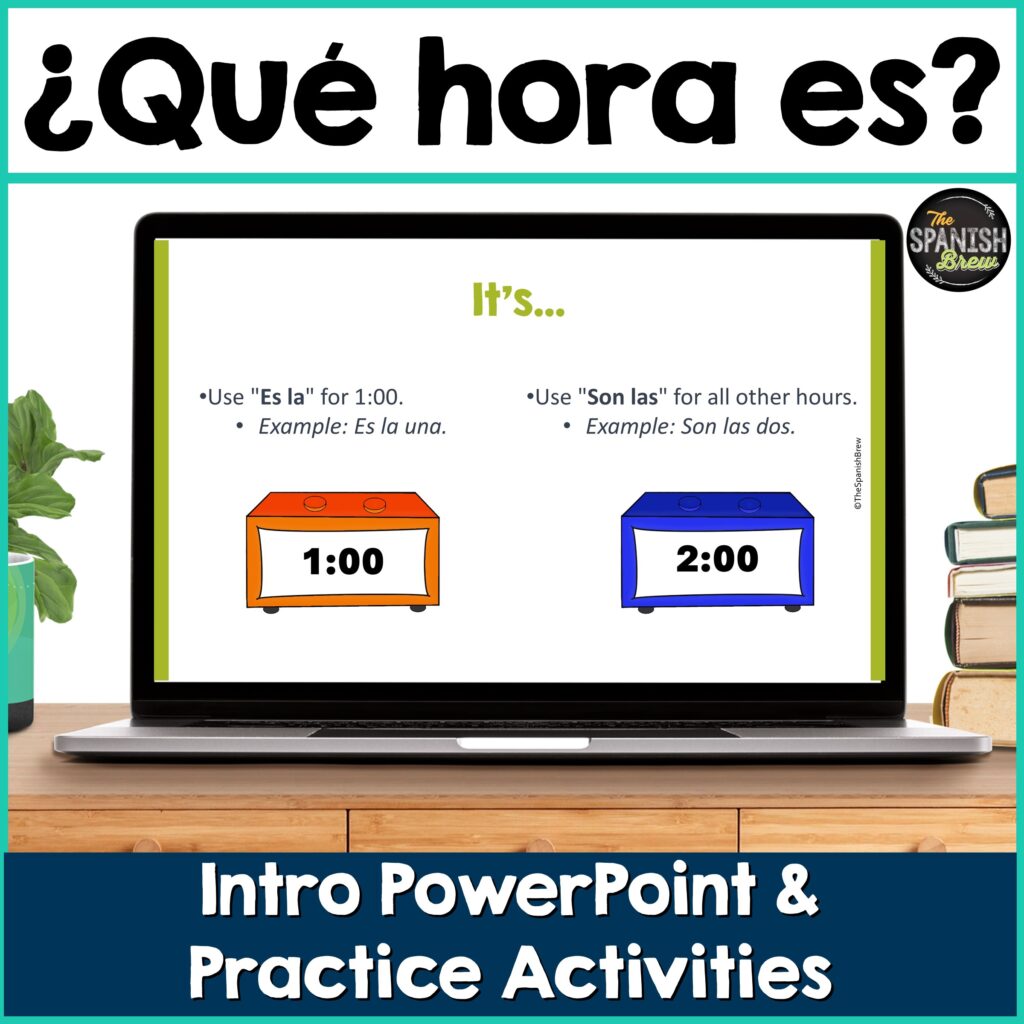
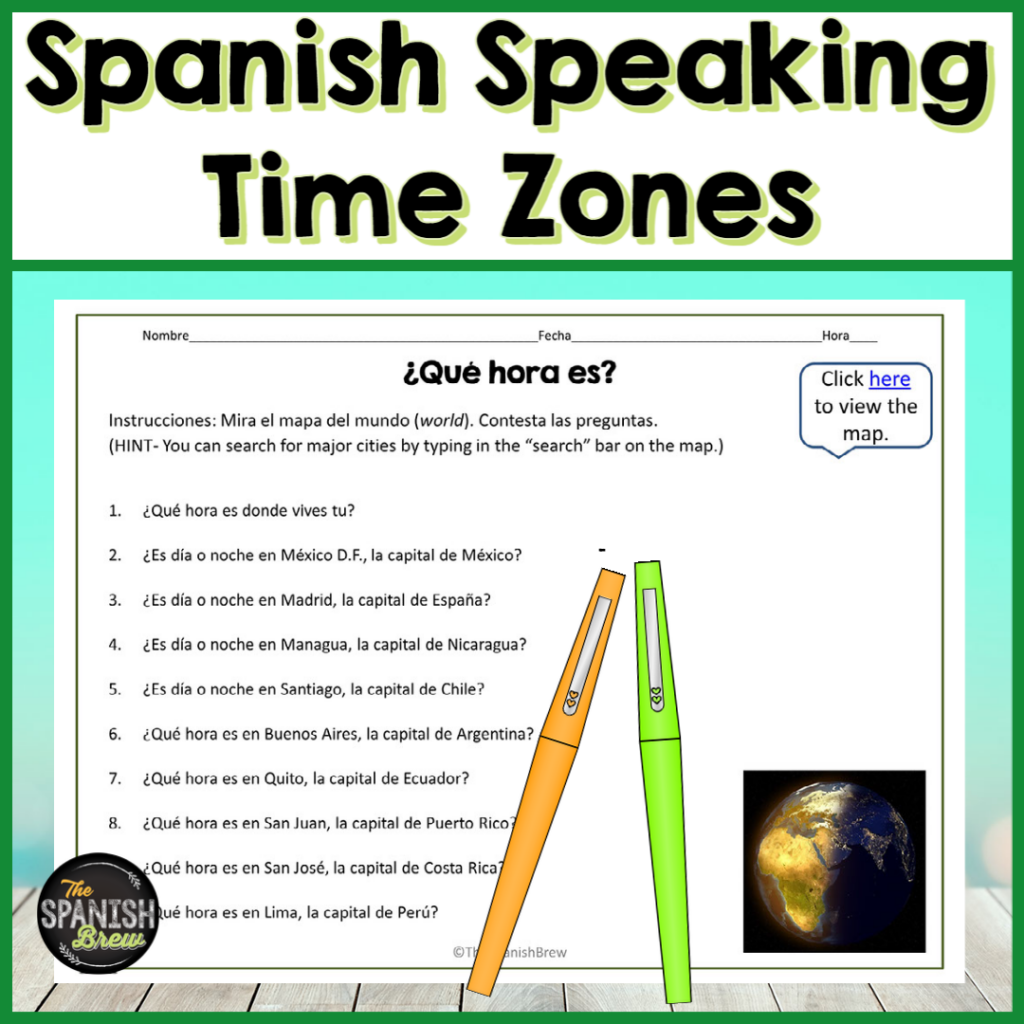
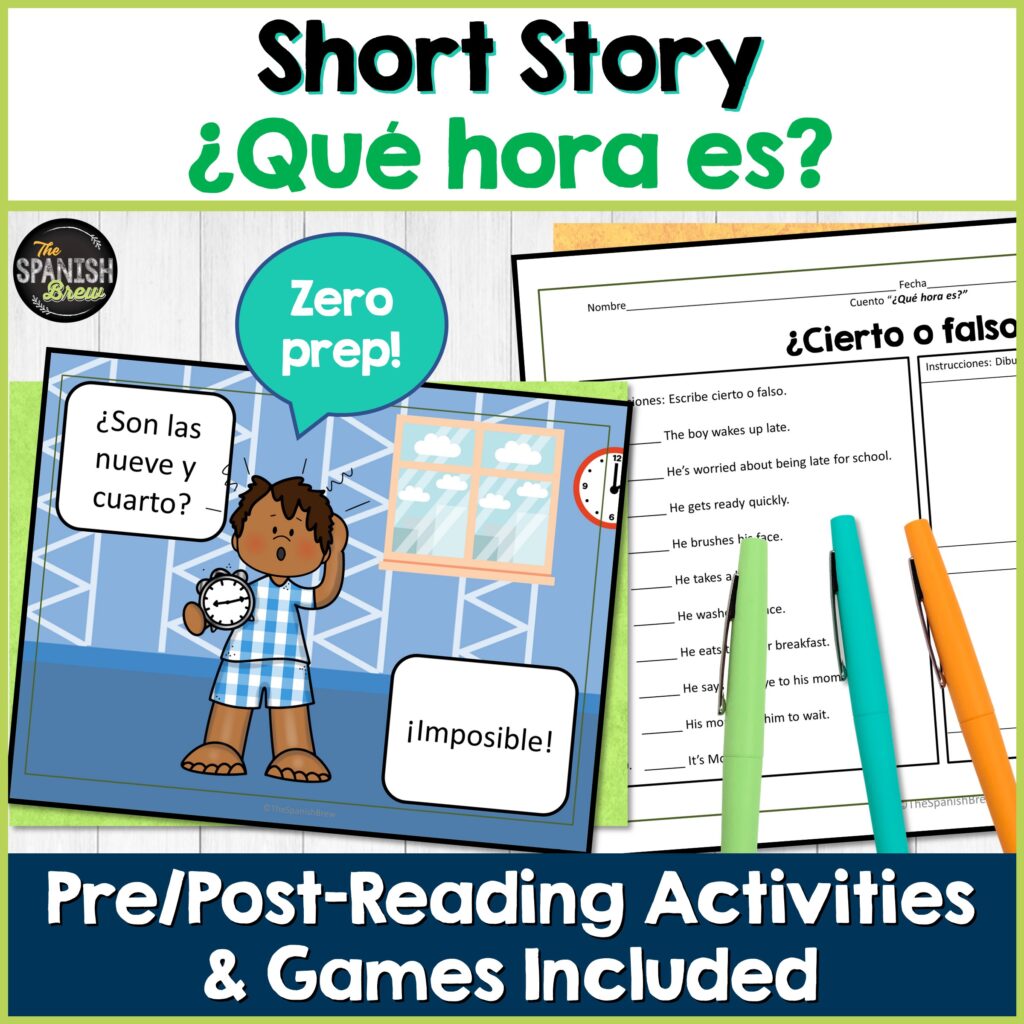
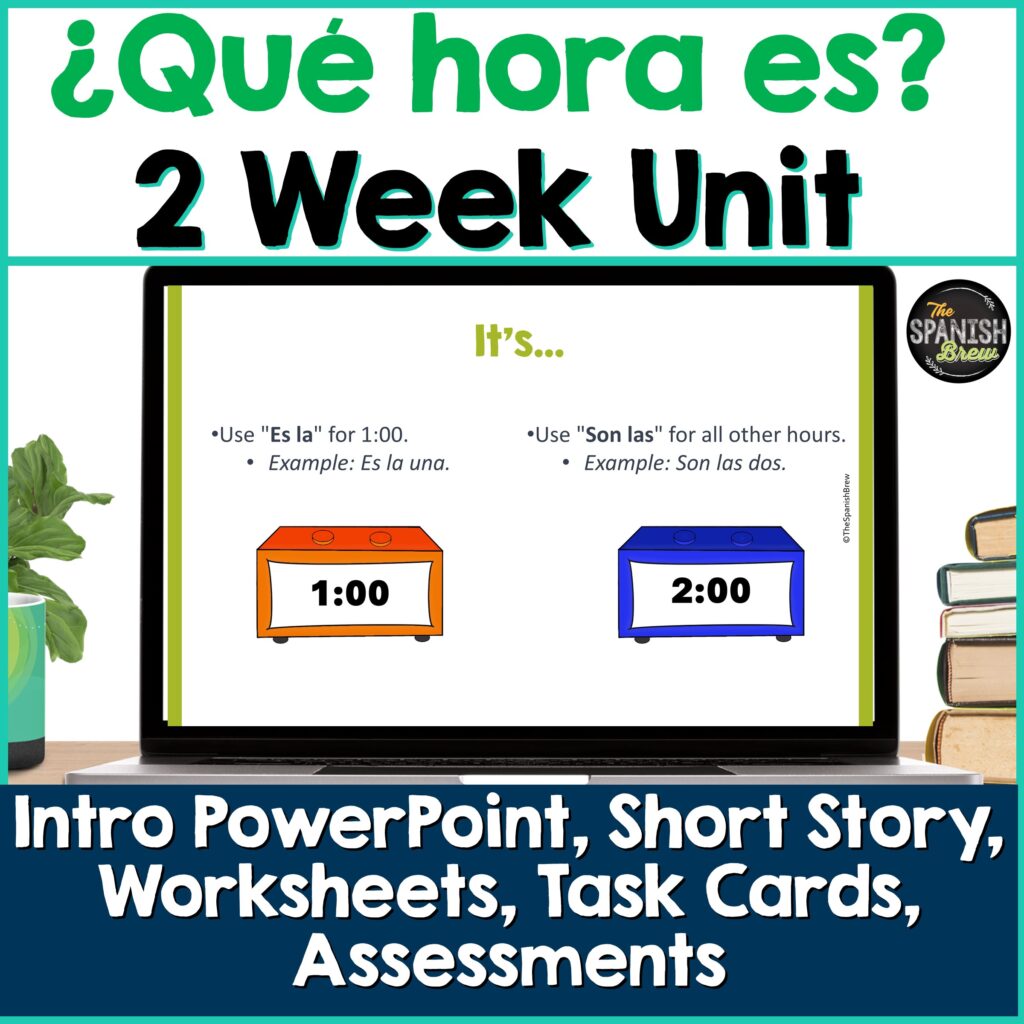



No Comments